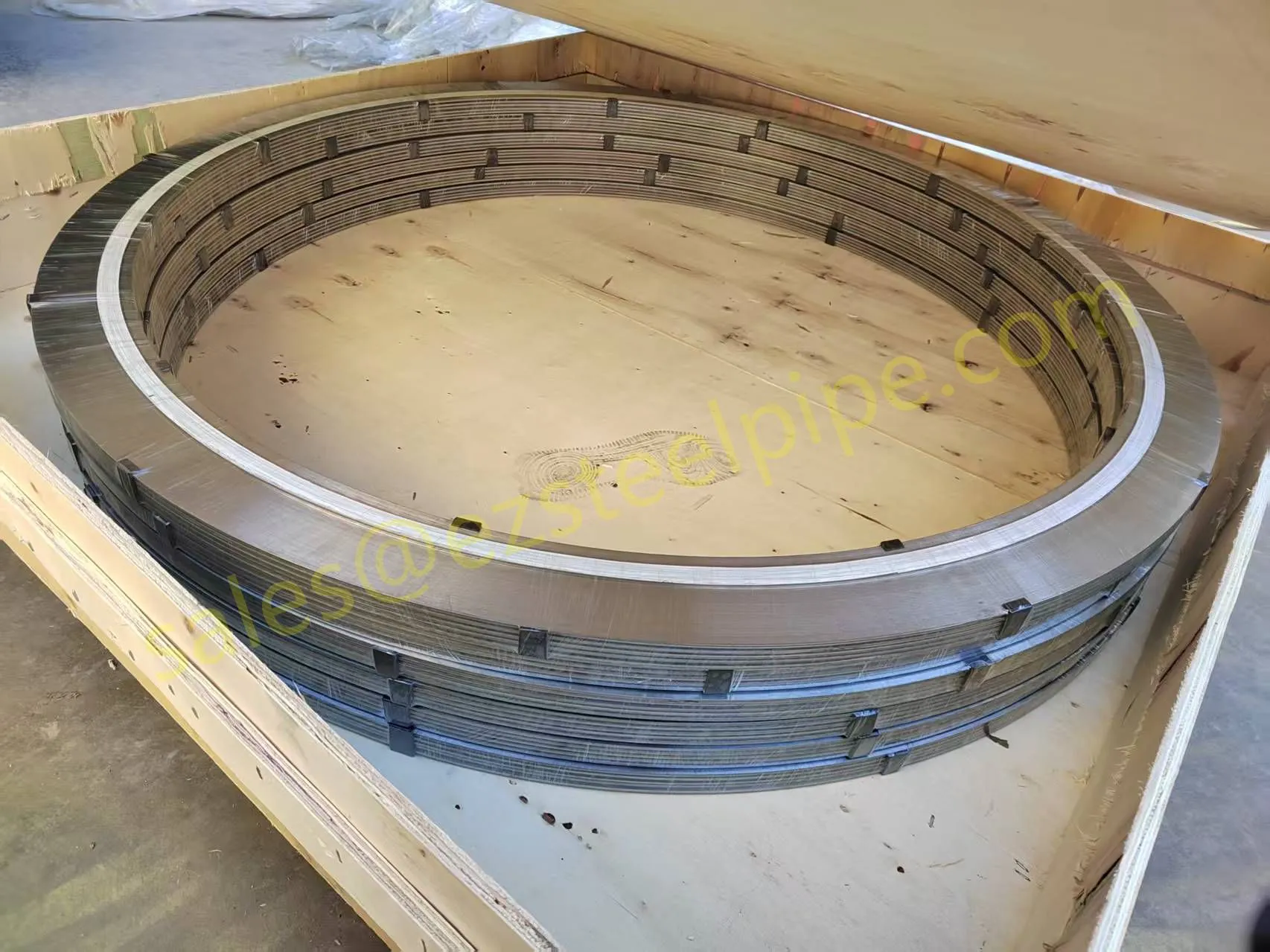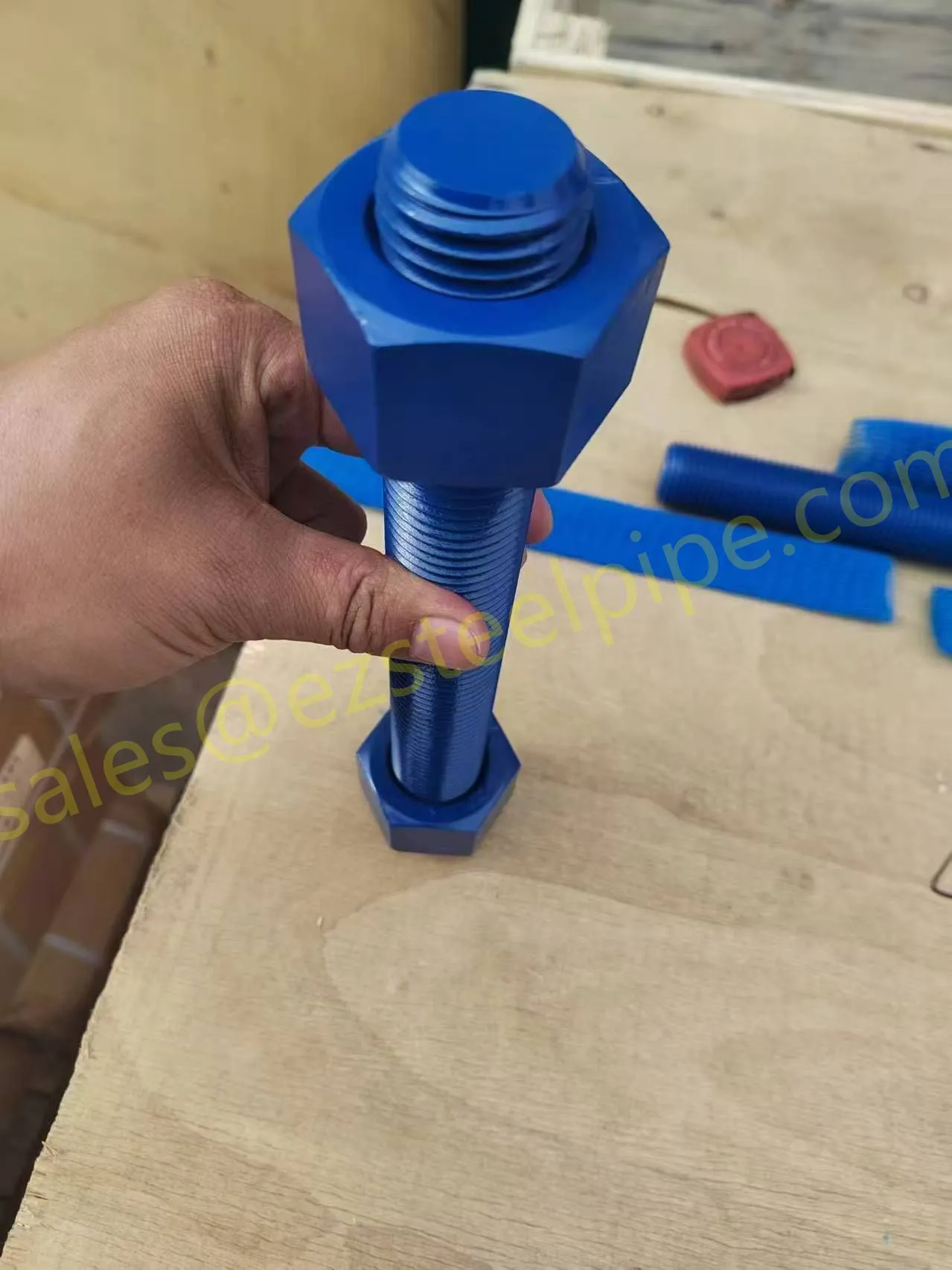 export@ezsteelpipe.com
export@ezsteelpipe.com +86 731 8870 6116
+86 731 8870 6116
Gaskets are critical sealing components used to prevent leaks between two mating surfaces, such as flanges, under compression. They fill irregularities and create a tight seal, accommodating variations in surface finish, alignment, and pressure. Below is an overview of gasket types, manufacturing standards, and general applications.


Gaskets are critical sealing components used to prevent leaks between two mating surfaces, such as flanges, under compression. They fill irregularities and create a tight seal, accommodating variations in surface finish, alignment, and pressure. Below is an overview of gasket types, manufacturing standards, and general applications.
Gaskets are classified based on material, construction, and application:
A. Non-Metallic Gaskets
- Rubber Gaskets (EPDM, Nitrile, Neoprene, Silicone)
- Used in low-pressure, low-temperature applications (e.g., water, air, chemicals).
- Cork Gaskets
- Used in fuel systems and automotive applications for vibration damping.
- PTFE (Teflon) Gaskets
- Resistant to chemicals and high temperatures; common in chemical processing.
- Compressed Fiber (Non-Asbestos) Gaskets
- Made from aramid, cellulose, or glass fibers; used in pipelines, engines, and industrial flanges.
B. Semi-Metallic Gaskets
- Spiral Wound Gaskets
- Alternating layers of metal (stainless steel, carbon steel) and filler (PTFE, graphite).
- Used in high-pressure/temperature applications (oil & gas, petrochemical).
- Camprofile Gaskets
- Metal core with a serrated face and soft sealing layer (PTFE/graphite).
- Ideal for uneven flange surfaces.
- Metal Jacketed Gaskets
- Soft filler (asbestos-free) enclosed in a metal jacket (stainless steel, copper).
- Used in heat exchangers and high-pressure steam systems.
C. Metallic Gaskets
- Ring-Type Joint (RTJ) Gaskets
- Made of soft iron, stainless steel; used in high-pressure oil/gas pipelines.
- Flat Metal Gaskets
- Simple designs for high-temperature applications.
- Corrugated Metal Gaskets
- Used in heat exchangers and exhaust systems.
Gaskets are produced according to international standards to ensure compatibility and performance:
- ASME (American Society of Mechanical Engineers)
- B16.20: Covers spiral wound and ring-joint gaskets for pipe flanges.
- B16.21: Non-metallic flat gaskets.
- ASTM (American Society for Testing and Materials)
- ASTM F104: Non-metallic gasket materials.
- ASTM F37: Compression and leak rate testing.
- EN (European Norms)
- EN 1514: Dimensions for flange gaskets.
- EN 12560: Gaskets for pipe flanges.
- API (American Petroleum Institute)
- API 6A: Gaskets for wellhead equipment.
- DIN (Deutsches Institut für Normung)
- DIN 2690: Gaskets for flanges.
Gaskets are used across industries where sealing is critical:
- Oil & Gas: Pipeline flanges, valves, pumps (RTJ, spiral wound).
- Chemical Processing: PTFE gaskets for corrosive fluids.
- Power Plants: High-temperature graphite gaskets for steam systems.
- Automotive: Cork/rubber gaskets for engines and fuel systems.
- Pharmaceutical/Food: FDA-approved silicone/PTFE gaskets.
- HVAC: Rubber/fiber gaskets for air/water sealing.
Gasket selection depends on factors like temperature, pressure, fluid compatibility, and flange type. Standards ensure reliability, while material choice determines performance in specific environments. For critical applications (e.g., refineries), spiral wound or RTJ gaskets are preferred, while rubber/fiber gaskets suffice for general-purpose use.

Stud bolts and nuts are essential fasteners used to assemble flanged joints, pressure vessels, and piping systems. They provide strong, reliable clamping force to ensure leak-proof connections in high-pressure and high-temperature environments.
A. Stud Bolts
Stud bolts are threaded rods with no head, typically installed between two flanges with nuts on both ends.
1. Fully Threaded Stud Bolts
- Threads run the entire length of the stud.
- Used where maximum adjustability is needed.
- Common in general flange connections.
2. Double-End Stud Bolts (Tap-End Studs)
- Threads on both ends with an unthreaded middle section (shank).
- Provides better fatigue resistance.
- Used in high-vibration applications (e.g., engines, heavy machinery).
3. Continuous Threaded Stud Bolts
- Threads cover the entire length but with a uniform diameter.
- Used in structural applications where full engagement is required.
B. Nuts
Nuts are paired with stud bolts to secure flanges. Common types include:
1. Hex Nuts (Standard Heavy Hex Nuts)
- Most common type, used with stud bolts in flanges.
- Heavy Hex Nuts (thicker than standard) are used in high-pressure applications.
2. Flange Nuts
- Have a built-in washer-like flange to distribute load.
- Used in automotive and structural applications.
3. Lock Nuts (Nylon Insert, All-Metal Lock Nuts)
- Prevent loosening due to vibration.
- Common in machinery and automotive applications.
4. Castle Nuts
- Used with cotter pins for secure fastening (e.g., automotive wheel bearings).
Stud bolts and nuts must comply with international standards for material, dimensions, and performance.
A. Stud Bolt Standards
- ASME B16.5 – Covers stud bolt dimensions for pipe flanges.
- ASME B18.2.1 – Standard for hex bolts and studs.
- ASTM A193 – Specifies high-temperature alloy steel stud bolts (e.g., B7, B16).
- ASTM A320 – Low-temperature carbon/alloy steel stud bolts (e.g., L7).
- ISO 4014/4017 – International standards for metric stud bolts.
- API 6A – Stud bolts for wellhead and Christmas tree equipment.
B. Nut Standards
- ASME B18.2.2 – Heavy hex nuts for stud bolts.
- ASTM A194 – Nuts for high-pressure/temperature service (e.g., 2H, 7).
- ISO 4032/4034 – Metric hex nuts.
- DIN 934 – German standard for hex nuts.
Stud bolts and nuts are used in industries requiring high-strength, leak-proof connections:
A. Oil & Gas
- Flange connections in pipelines, valves, and pressure vessels.
- Materials: ASTM A193 B7 studs with A194 2H nuts.
B. Petrochemical & Refineries
- High-pressure/temperature flanges (ASTM A320 L7 for low temps).
C. Power Plants
- Boilers, steam turbines, and heat exchangers (high-temp alloy studs).
D. Automotive & Aerospace
- Engine components, exhaust systems (high-strength, vibration-resistant fasteners).
E. Construction & Structural Engineering
- Steel frameworks, bridges, and heavy machinery.
F. Shipbuilding & Marine
- Saltwater-resistant studs (stainless steel AISI 316).
| Material | Properties | Common Grades |
| Carbon Steel | General-purpose, cost-effective | ASTM A307, Grade 4.6/8.8 |
| Alloy Steel | High strength, heat resistance | ASTM A193 B7, B16 |
| Stainless Steel | Corrosion resistance | AISI 304, 316, ASTM A320 L7 |
| Titanium | Lightweight, high corrosion resistance | Grade 2, Grade 5 |
Stud bolts and nuts are critical for maintaining structural integrity in high-pressure systems. The correct selection depends on:
- Material (carbon steel, alloy, stainless steel).
- Thread type (coarse/fine, metric/imperial).
- Application (temperature, pressure, corrosion resistance).
For critical applications (e.g., oil & gas), ASTM A193 B7 studs with A194 2H nuts are the industry standard.

 Related Products
Related Products